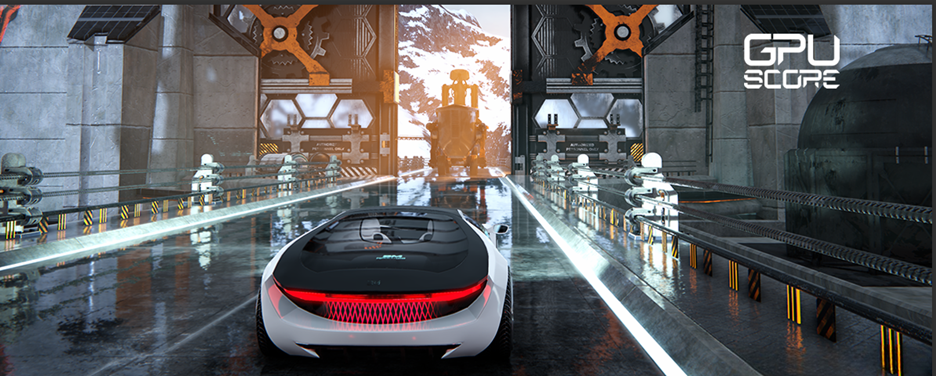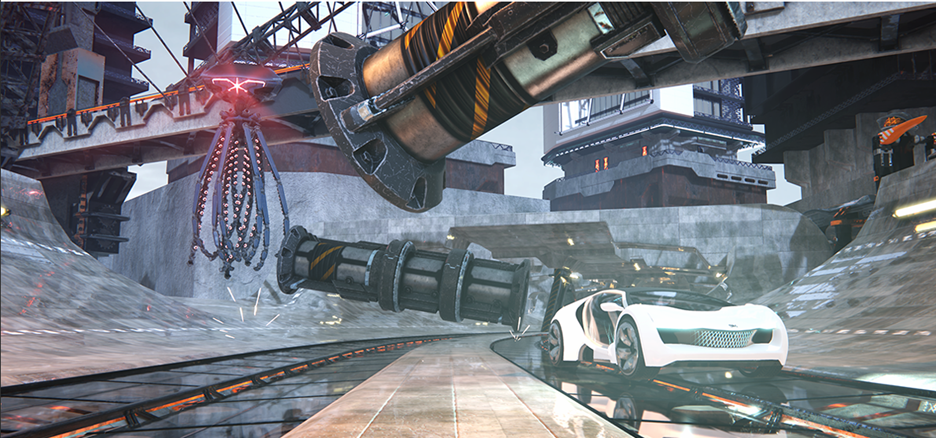As robots and AI advance, the lines between artificial and real may blur. Real-time graphics are becoming increasingly realistic, with ray-tracing technology leading the way. Basemark’s Breaking Limit benchmark is designed to test ray-tracing capabilities across various devices, including desktops, laptops, and smartphones. The benchmark features two workloads: a standard workload for lower-end devices and a dedicated workload, Breaking Limit Ultra, for high-end GPUs. The cross-platform capability allows for precise performance comparisons between devices without platform-specific optimizations. Breaking Limit Ultra also includes upscaling tests, acknowledging the common practice of combining upscaling with ray tracing. The benchmark uses a hybrid ray-tracing approach and frame-based rendering, with 2,100 rendered frames in total. By testing the limits of ray tracing, Basemark aims to provide valuable insights for game developers, artists, and GPU manufacturers, and to answer questions about the future of real-time graphics.

What do we think? If this benchmark does all it says it does, and the Basemark team has a good reputation for delivering what they promise, then we may have a new standard by which all devices and platforms are measured for ray-racing performance. We’ll need some time to test things to see if the results meet our expectations, but the confidence factor is high.
Basemark’s Breaking Limit benchmark for testing ray-tracing capabilities across range of devices
In a future where robots and AI technologies can perform complex tasks and operate factories, will we blur the line between artificial and real? Or are we racing towards an irreversible point of no return? The boundary between reality and simulation in real-time graphics is rapidly blurring, becoming increasingly thin each year. With the aid of AI techniques, we are likely to achieve near-perfect realism, though there is still progress to be made.
Real-time ray tracing, the initial step toward achieving realism, has been around for some time. Just a year and a half after Basemark released the first ray-tracing benchmark for mobile, this technology has become essential in the handheld market, with many brands offering devices that support ray tracing on mobile platforms. In desktop environments, real-time ray tracing has established a strong presence, setting the stage for the next technological advancements.
What exactly differentiates real-time graphics on desktops from mobile devices? What are the future steps for this technology? What will the next chapter be? These are some of the questions that Basemark hopes to answer with its GPUScore: Breaking Limit.
Breaking Limit is a benchmark designed for a wide range of devices, including desktop systems, laptops, and premium smartphones. Its cross-platform capability allows the same benchmark to run seamlessly across platforms and environments, making it an excellent tool for comparison.
Breaking Limit features two workloads:
- A standard workload for premium smartphones, tablets, laptops, and lower-end desktop systems.
- A dedicated workload, Breaking Limit Ultra, for high-end GPUs in desktop systems and laptops.
The benchmark is exclusively designed for ray-tracing-capable devices, providing valuable insights for game developers, artists, and GPU manufacturers. Its cross-platform capability, says Basemark, enables precise performance comparisons among phones, laptops, and desktops without platform-specific optimizations.
Additionally, Breaking Limit Ultra includes two new upscaling tests, acknowledging the common practice of combining upscaling with ray tracing to boost frame rates.
The cross-platform and Ultra workloads employ a hybrid ray-tracing approach, using ray queries in conjunction with rasterization. As in all previous benchmarks, frame-based rendering is utilized in the official benchmarks. The application uses off-screen rendering and shows a set of nine rendered frames per presentation. This is done to prevent drivers from skipping frames and to provide more headroom for high-performing devices. The benchmarks consist of 2,100 rendered frames.
Breaking Limit (the cross-platform workload)
The cross-platform workload in Breaking Limit supports all major operating systems, including Windows, Linux, iOS, and Android, and is compatible with modern graphics APIs such as DirectX 12, Vulkan, and Metal. The official benchmarks render at a Full HD resolution (1920×1080).
Ray-tracing effects in this workload include ray-traced reflections and ray-traced shadows. The main directional light’s shadows are ray-traced, while other lights use shadow maps to optimize performance. Reflections are ray-traced at 75% of the main resolution to balance performance and precision.
Additional high-end rendering features include Ground Truth Ambient Occlusion (GTAO), volumetric fog, motion blur, and temporal anti-aliasing (TAA). The workload employs 11 shadow-casting light sources and consumes approximately 2.1GB of GPU memory.
To maintain high quality within a limited performance budget, the workload employs various optimization techniques, such as using level of detail (LOD) meshes similar to those used in games.
Breaking Limit Ultra
Breaking Limit Ultra is an exceptionally demanding workload specifically designed for high-end laptops and desktop computers equipped with discrete GPUs. It is compatible with Windows and Linux, and supports DirectX 12 and Vulkan. The official benchmark rendering resolution is set at 3840×2160.
Like its cross-platform counterpart, Breaking Limit Ultra utilizes ray-traced reflections, ray-traced shadows, and, additionally, ray-traced global illumination. The ray-traced reflections resolution matches the main rendering resolution (3840×2160), and up to right light sources are ray-traced for shadows per frame.
This workload also incorporates advanced rendering features, including:
- GTAO
- Volumetric fog
- Motion blur
- TAA
With an average of 2.5 million triangles in the camera frustum, 49 shadow-casting light sources, and approximately 6GB of GPU memory consumption, this workload pushes high-end GPUs to their limits.
Notably, Breaking Limit Ultra includes two benchmarks that showcase AI upscaling techniques:
- Nvidia’s DLSS2 (Deep Learning Super Sampling 2)
- AMD’s FSR 2 (FidelityFX Super Resolution 2)
These benchmarks demonstrate the capabilities of AI-enhanced upscaling in real-world scenarios.
For both workloads, a custom benchmark option is available, allowing users to configure various settings. This enables users to assess the performance and quality impacts of different features, such as texture resolution or the number of bounces used in ray-traced reflections.
Due to the wide range of possible variations, results from the custom benchmark are not uploaded to Powerboard, GPUScore’s online results platform, to avoid inconsistencies and ensure comparability.
The custom benchmarks for both workloads include several configurable settings, which you can learn about here.
